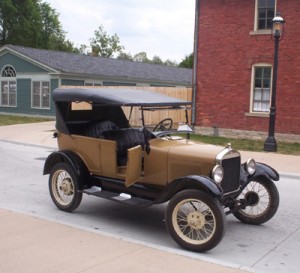THE ROLE OF ENTHUSIAST ORGANIZATIONS IN INNOVATION
/The Role of Enthusiast Organizations in Innovation
What do electric planes, home brewed beer, automobiles, and personal computers have in common? They are all innovations with enthusiast organizations to thank for their development.

A couple weeks ago I wrote about "public" innovation labs like Google Labs, PARC Living Laboratory, and IDEO Labs. At the end, I asked:
Each of the above public examples have an organization taking the lead and gaining its own benefit. What if the users took the lead? We see this with the free and open source software collaborations. What about more physical innovations, or cases where the it’s not a joint project, but many people still contribute?
An excerpt of Huggy Rao's 2008 book Market Rebels and Radical Innovation gave me some great history and insights (video of Prof. Rao talking about book). He points out that automobiles, personal computers, and home brewed beer each had a "hot cause" to arouse emotion and create a community of members, and "cool mobilization" -- think jazz "cool" -- to signal the identity of members and to sustain their commitment:
- Automobiles had enthusiast organizations with with hot cause goals of shielding owners from legal harassment and solving problems of transportation (this was the late 1800s). The cool mobilization strategies were reliability contests (though some of them seem to have gotten pretty "hot" - women screaming, men stomping on hats...)
- Personal computers had "the tyranny of the central computer" as their hot cause and hobbyist clubs (most famously, the Home Brew Computer Club where the Apple I and many others made their debut) as their cool mobilization.
- Microbrewing and its American Homebrewers Association had the democratization of the production of beer -- with the downfall of "industrial beer" ("thin and overcarbonated") as their hot cause, and home brewing, frequenting brewpubs, and beer festivals as mechanisms for cool mobilization.
I've added electric planes to give us thoughts for the future. Electric plane enthusiasts have EAA (Experimental Aircraft Association), the CAFE Foundation, and NASA behind them. While there might not be women screaming and men stomping on hats, there is a $1.5 Million prize "for aircraft that can average at least 100 mph on a 200-mile flight while achieving greater than 200 passenger miles per gallon" - and electric power is likely to play a role. Clearly "green" is hot -- and NASA is cool. But such collaboration isn't natural or easy.
In Steve Gillmor's recent interview with Ray Ozzie (Microsoft's Chief Software Architect and creator of Lotus Notes and Groove), Ozzie says about collaboration: "... people don’t like to work on things that are joint objectives; they like to work on things that are their key — that satisfy their KPIs [key performance indicators], their objectives, not necessarily the joint ones." Rao's "hot" and "cool" (and his deeper analytic links between radical innovation and insurgency) may be the explanation for our examples of collaborative efforts related to these innovations: the causes were so motivating and the social movements so strong that they did (do) help people meet their own objectives.
Photo by rmhermen







